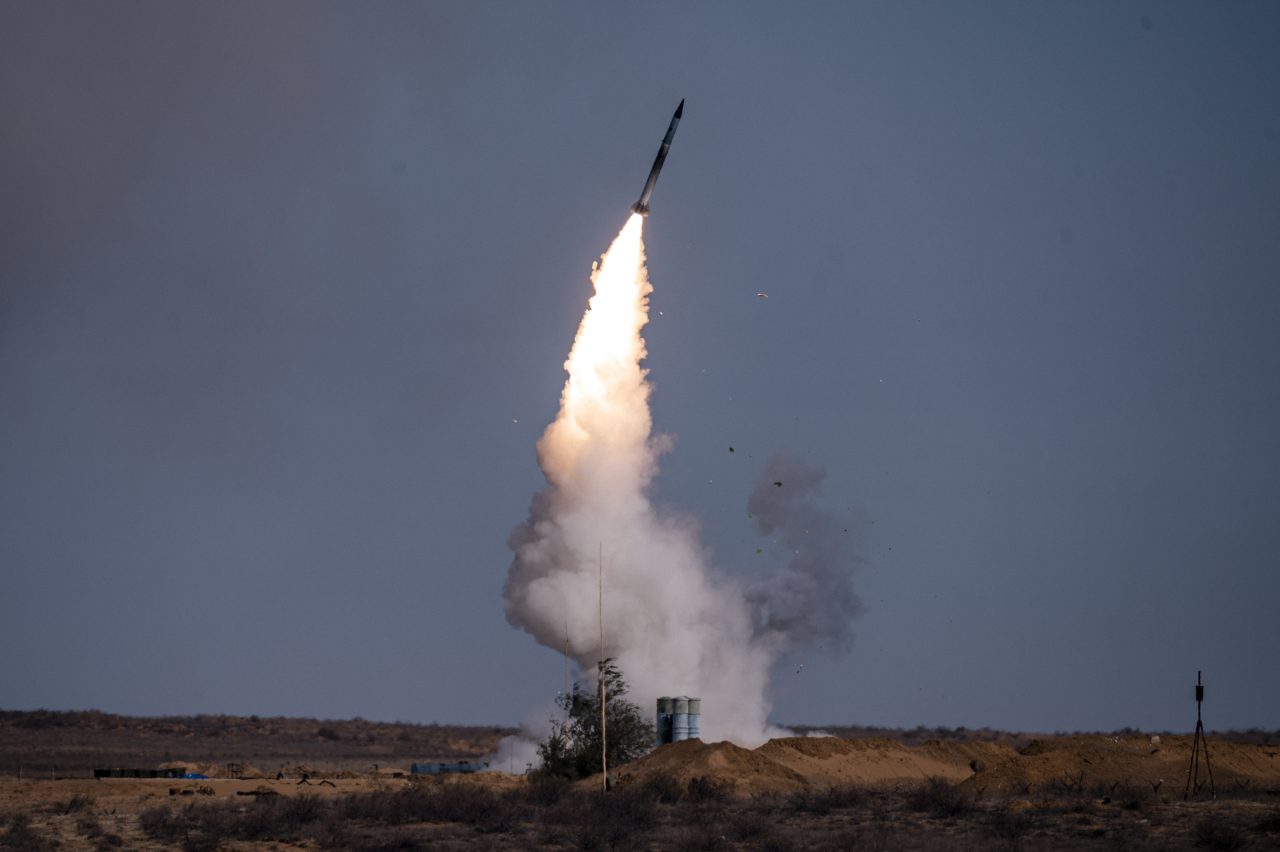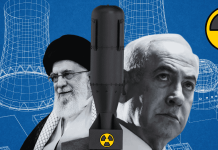Speaking at the “Katre Memorial Lecture,” a function organised by the Air Force Association at Bengaluru, the Indian Air Force (IAF) Chief, AP Singh made a specific mention of the deterrent capability of the S-400 Air Defence system, and the accuracy of BrahMos supersonic cruise missiles that had a game changer role in “Op Sindoor”.
For long, IAF strategy, tactics, and inventories have been designed for offensive strikes against the Western neighbour with whom India has had three full-fledged wars and many shorter skirmishes.
Having a smaller economy and military, Pakistan was conscious and built an air force that is air defence oriented. In recent decades, India has also had to prepare to take on a potential threat from China.
Notwithstanding the known positions, the Indian strikes against both terror and military targets all across Pakistan proved very successful, and Pakistan’s defensive systems could not engage or thwart them.
Op Sindoor saw weapon platforms and armaments belonging to many countries at play. These included the USA, Russia, China, France, and Turkey, among others.
Most analysts have been comparing and analysing the performance of major weapons. This was also of interest to the manufacturing companies and their host countries.
Some of the writings were also part of the narrative building to introduce motivated biases with politico-commercial considerations. Both sides claimed to have shot down each other’s aircraft on the opening round, but since no aircraft crossed the border, or even came close to it, the wreckage, if at all, would have fallen in their own territories, and so proof may have been concealed.
But 3 months after the operation, more facts have come out.
The Air Chief talked of nearly five Pakistani fighter aircraft having been shot down in the air by an Indian S-400. Interestingly, the S-400 achieved its farthest kill ever by destroying a High Value Air asset (HVAA) at nearly 300 kilometres. In addition, at least three F-16s and one C-130 were destroyed during airfield strikes, Air Chief said.
Major Weapons at Play
The proof of the results of the strikes by French Scalp and BrahMos anti-surface cruise missiles, and indigenous SkyStriker loiter munitions (LM) was available from Battle Damage Assessment (BDA) satellite pictures. Israeli Harop, large Loiter Munitions, were also very effective.
The Chinese HQ-9 Surface-to-Air Missile (SAM) system, a poor copy of the Russian S-300, could not intercept any of the Indian strikes. Nor did Pakistan claim any aircraft had been shot down using these SAMs, as all claims were being assigned to the much-touted Chinese PL-15 Air-to-Air Missile (AAM).
Pakistan claimed shooting down a few Indian aircraft and attributed all kills to the Chinese PL-15. A few of them landed in India in complete form, perhaps having been fired at ranges outside the envelope or having had technical failures, and will allow India to evaluate the system and technology.
There were also doubts about the variant of PL-15 supplied to Pakistan. The upend variant with China has a claimed range of 180 kilometres. Pakistan was supposed to have the export variant, the PL-15E, with a range of 145 kilometres.
There was a unanimous opinion of all global experts on the good performance of two weapons, the S-400 SAM system and the BrahMos anti-surface missiles (ASM).
Both performed flawlessly. Both are of Russian origin, and both are universally feared (respected) for their range, speed of engagement, and precision. At least 15 Indo-Russian BrahMos missiles were fired. The number of S-400 system missiles fired is still not in the public domain.

Cross-Border Air Strikes
Just to recap, in the early hours of 7 May 2025, India launched air strikes on nine terrorist targets in Pakistan using 24 stand-off weapons. The missiles targeted only the camps and infrastructure of militant groups Jaish-e-Mohammed and Lashkar-e-Taiba, and no Pakistani military or civilian facilities were engaged.
The 23-minute duration initial Indian strikes were reportedly carried out by the Rafale aircraft using SCALP missiles, and Su-30 MKI firing BrahMos cruise missiles as well as the Indian Army’s Indo-Israeli SkyStriker loitering munitions.
Satellite and intelligence photographic proof of the success of strikes was presented to the Indian and Global media.
Pakistan responded with significant drone and missile strikes at Indian military and civilian targets under the operation codenamed Operation Bunyan-un-Marsoos.
This included targeting airfields from Kashmir to Gujarat. India negated these strikes with its integrated air defence and counter-drone systems.
The S-400 missile system was deployed, marking India’s first combat use of this missile system. India’s indigenous Akash AD system played a huge role.
Pakistani strikes caused insignificant damage and very few civilian casualties. Meanwhile, the IAF carried out SEAD/DEAD operations, neutralizing Pakistani air defence systems, including the Chinese HQ-9 in Lahore, starting on 9th May.
On 10 May, in response to Pakistani strikes against Indian military targets, the IAF made a major airstrike across the length and depth of the country, targeting a variety of military targets, including airfields, AD systems, weapons, and logistic storage sites.
The “Nur Khan” military airfield at Chaklala, which is just next to the Capital, Islamabad, and the Pakistan Army’s HQs at Rawalpindi were also hit.
Other airfields hit were Sargoda, Rafiqi, Rahim Yar Khan, and radars and storage dumps at Pasrur, Malir, Chunian, Sukkur, Pasrur, and the Sialkot aviation base. India also inflicted extensive damage on air bases at Skardu, Jacobabad, and Bholari in Pakistan.
During its retaliatory strikes on Indian military targets, Pakistan claimed that the BrahMos storage facilities at Beas and Nagrota were destroyed, and that two S-400 systems at Adampur and Bhuj were neutralised.
International media acknowledged that all such claims were false. Immediately after the ceasefire, Indian Prime Minister Modi visited Adampur and addressed the personnel with the S-400 launcher forming the background. A similar visit was made by Defence Minister Rajnath Singh to Bhuj.
Debt-ridden Pakistan, which was already seeking financial bailout from the IMF, was rattled by the audacity and accuracy of the air strikes, and its Director General of Military Operations (DGMO) called his Indian counterpart on the hotline, requesting a ceasefire.
A new normal had been set between the two nuclear-armed neighbours. Similar strikes could be triggered again in case of another Pakistan-backed terror attack.
There was significant cyber warfare. There was also a war of narratives fought across the globe, especially to highlight the success or failure of specific military hardware for commercial reasons.
Turkey had supplied a large quantity of drones to Pakistan. These were used, but caused little damage on the ground. While the two sides were effectively at war, neither side had fully mobilized its ground forces. A fragile ceasefire was achieved around midday on 10 May. India called it a pause in hostilities. But it has held ever since.
India said that 21 of its civilians and five military personnel had died in the conflict. The casualties and the majority of the injuries occurred due to cross-LoC firing.
Pakistan said that 51 of its people had died in the clashes, including 40 civilians and 11 military personnel.
India claimed nearly 130 terrorists had been killed. India got global backing against terror; however, not many were willing to take sides during the conflict.
Few systems got universal praise. These included the S-400 AD System, India’s indigenous Akash AD system, the DRDO 4D (Drone, Detect, Deter, Destroy) counter-drone system, and the BrahMos anti-surface missiles. The French Scalp missile proved extremely accurate and destructive.
Let us look at the two Russia-origin systems.
S-400 Missile System “Sudarshan Chakra”
The S-400 is a Russian mobile SAM system developed in the 1990s by Russia’s NPO Almaz as an upgrade to the S-300 family of missiles.
The S-400 joined the Russian armed forces in 2007. The system is complemented by its successor, the S-500. The S-400 system has four radars and four sets of missiles covering different ranges and vertical bubbles.
The maximum target detection range is 600 kilometres, and targets can be engaged as far as 400 kilometres. The five S-400 batteries contracted by India in 2018 cost $5.43 billion, including reserve missiles.
All the sub-units are data-linked and controlled by a central command and control system with sufficient redundancy. The system is capable of layered defence and integrates with other Indian air defences.
One system can control 72 launchers, with a maximum of 384 missiles. All missiles are equipped with directed explosion warheads, which increases the probability of complete destruction of aerial targets.
The system is designed to destroy aircraft, cruise, and ballistic missiles, and can also be used against ground targets. It can engage targets up to 17,000 km/h or Mach 14. It can intercept low-flying cruise missiles at a range of about 40 km due to the line-of-sight requirement. The anti-ballistic missile (ABM) capabilities of the S-400 system are near the maximum allowed under the (now void) Anti-Ballistic Missile Treaty. The number of simultaneously engaged targets by the full system is 36.
The system ground mobility speed is close to 60 km/h on roads and 25 km/h cross-country. It takes 5 minutes to be operational and fire when ordered while driving. Otherwise, the system response time is just 10 seconds. The time between major overhauls is 10,000 hours. The Service life is at least 20 years.
In Russia, the system was made operational around Moscow in 2007. Russia reportedly deployed S-400 in Syria. The system has been widely used in the ongoing conflict in Ukraine, and it is claimed to have shot down many aircraft.
Meanwhile, Ukraine has reportedly used Western weapons, mainly U.S.-made ATACMS missiles, to hit S-400 units on the ground.
Belarus has unspecified numbers of S-400 units. Deliveries to China, of the six batteries ordered, began in January 2018. Four batteries consisting of 36 fire units and 192 or more missiles were delivered to Turkey.
Algeria is another operator. Some other countries, like Iran, Egypt, Iraq, and Serbia, have also shown interest. South Korea is developing the KM-SAM, a medium-range SAM system based on technology from S-400 missiles, with assistance from NPO Almaz.
Three of the five batteries have arrived in India. India took deliveries despite the American threat of CAATSA (Countering America’s Adversaries Through Sanctions Act).
The remaining two are expected in 2025/26. The recent conflict has revealed the rough location of two systems, one each in Punjab and Gujarat. As per open sources, the third is somewhere in the east. The systems have been tested in various Indian military exercises.
BrahMos
The BrahMos is a long-range ramjet supersonic cruise missile that can be launched from land, submarines, ships, and fighter aircraft. It is a joint venture between the Indian Defence Research and Development Organisation (DRDO) and the Russian Federation’s NPO Mashinostroyeniya, which together have formed BrahMos Aerospace.
The missile is based on Russian P-800 Oniks. The name BrahMos is a portmanteau formed from the names of two rivers, the Brahmaputra of India and the Moskva of Russia. India holds 50.5 percent share of the joint venture. 75 percent of the missile is manufactured in India and there are plans to increase this to 85 percent.
Large numbers of land-launched, ship-launched as well as air-launched versions have been inducted and are in service with the Indian armed forces.
The missile guidance has been developed by BrahMos Aerospace. In 2016, after India became a member of the Missile Technology Control Regime (MTCR), India and Russia gradually increased the range of the missile to 800 km. The latest deliveries to the Indian Navy are of this type.
The cruise missile has anti-ship and land-attack roles, and has been in service since June 2007. The other operator is the Philippine Marine Corps. The unit cost is around $ 3.5 million.
The extended range variant costs around $4.85 million. Many futuristic variants are evolving. The BrahMos-A is a modified air-launched variant of the missile with a reduced size and weight (2.55 tons). It has a range of 500 km when launched from Su-30 MKI, and it can carry only one BrahMos missile.
50 IAF SU-30MKI were modified to carry the BrahMos-A missile. Smaller-sized variants like BrahMos-NG could be carried on more types of aircraft, even on LCA. Additionally, the BrahMos-NG will have an AESA radar rather than the current mechanically scanned one.

The Sukhoi Su-30MKI will carry three NG missiles, while other IAF fighters will carry one. The BrahMos-NG will be ready by the end of 2025. BrahMos-II will be a hypersonic cruise missile. A UCAV variant is planned.
This solid propellant missile can carry a 200–300 kg warhead that could be nuclear or conventional semi-armour-piercing. Max operational ranges are up to 8-900 kilometres. Export variants are currently restricted to 290 kilometres.
The BrahMos is generally considered the world’s fastest supersonic cruise missile. Currently, the missile speed is Mach 3. Later variants will be hypersonic (M 5+). The missile is very accurate with a CEP of less than one metre.
BrahMos was first test-fired on 12 June 2001 from the Integrated Test Range (ITR), Chandipur, in a vertical launch configuration. The September 2010 test of BrahMos created a world record for being the first cruise missile to be tested at supersonic speeds in a steep-dive mode.
BrahMos was tested with an Indian seeker for the first time in March 2018, and was tested with an India-developed propulsion system, airframe, and power supply in September 2019. On 30 September 2020, India successfully test-fired an extended-range BrahMos, offering a range of around 350 km, at speeds up to Mach 2.8.
The submarine-launched variant of BrahMos was test-fired successfully for the first time from a submerged pontoon on 20 March 2013. Even BrahMos Block III land-attack variants are operational. There are plans to have missiles with a range of 1500 km or more.
BrahMos is operationally deployed in large numbers by the three services. Additional missile orders have been recently placed for extended-range variants.
The Philippines has placed a substantial order for their services, and deliveries began in 2024. Russia, too, has plans to buy many missiles. Brazil has shown interest in the missile system. Vietnam and Indonesia have already signed deals.
Sky Is Not The Limit
Resolute political will, choice of targets, weapon matching and accuracy, actionable intelligence, strong Indian air defences, and great IAF professionals. and hitting strategic targets in depth were the clear clinchers.
Aerospace has become the primary means of prosecuting war. India-Russia relations are time-tested. Nearly 60 percent of IAF aircraft are of Russian origin.
Russian platforms and weapons with the Indian armed forces have performed exceedingly well for many decades, since the MiG-21s of the 1960s. The S-400 and Su-30MKI-BrahMos combination have excelled in Op Sindoor.
Could S-500 (600 km) be the next acquisition? Will India select the Su-57 fifth-generation aircraft and Make in India? Can Russia help accelerate the Indian nuclear submarine program? Should India acquire the “AWACS Killer” Russian R-37M AAM and collaborate on developing futuristic long-range aerial missiles?
Should there be more work together on the Su-30MKI upgrade? Can the two enter into a joint venture for Kamikaze drones required by both sides in large numbers, and India can help scale up production?
The Sky is NO more the limit!
- Air Marshal Anil Chopra (Retired) is an Indian Air Force veteran, fighter test pilot, and ex-director-general of the Center for Air Power Studies in New Delhi. He has been decorated with gallantry and distinguished service medals during his 40-year tenure in the IAF.
- THIS IS AN OPTION ARTICLE. VIEWS PERSONAL OF THE AUTHOR
- He tweets @Chopsyturvey
- Follow EurAsian Times on Google News




